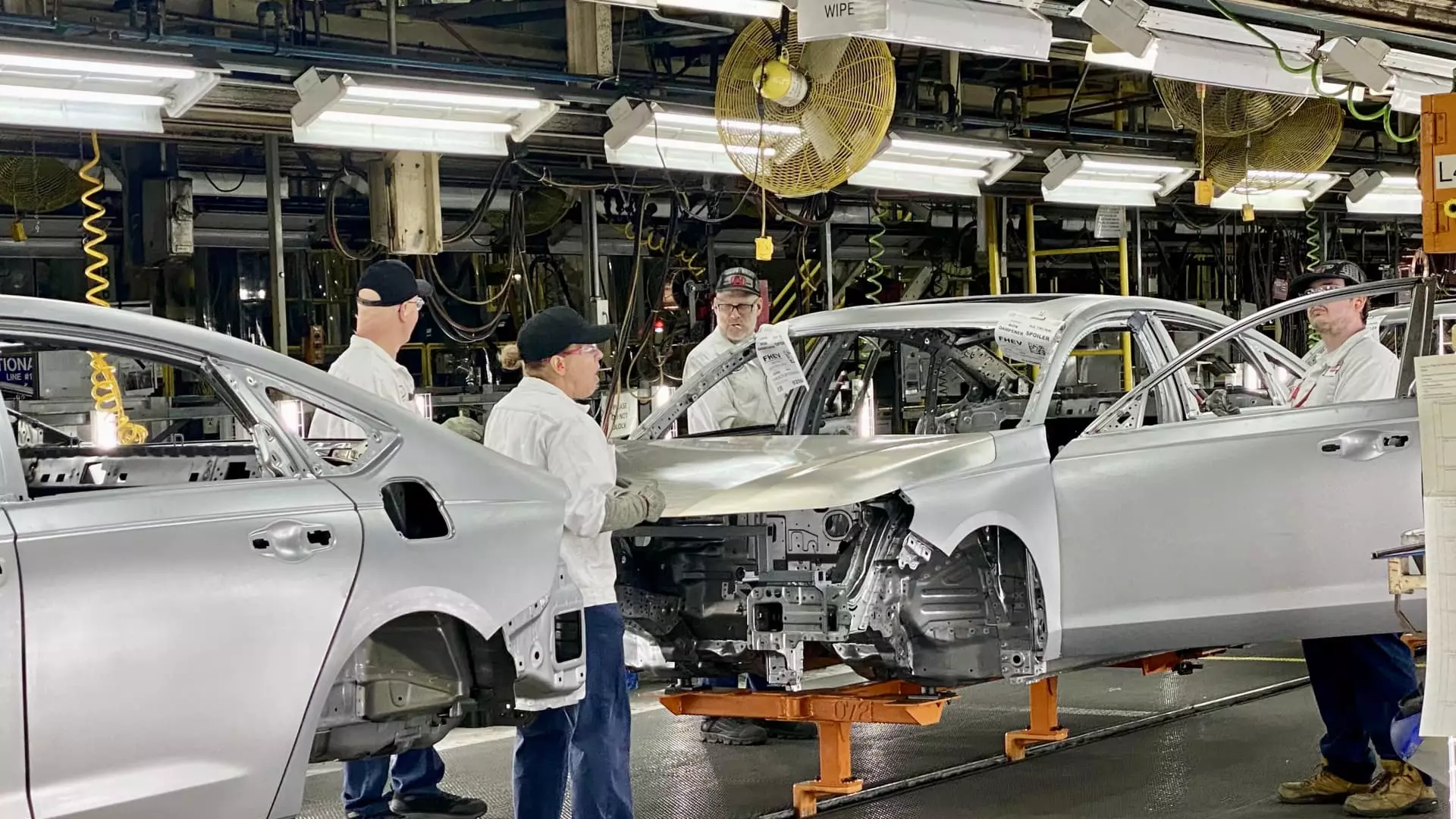The landscape of automotive manufacturing is shifting dramatically, with Honda Motors leading the charge in this transformative wave. This Japanese automotive giant has embarked on a noteworthy venture by choosing Ohio—an unconventional setting for their new electric vehicle (EV) initiatives. The company’s ambitious plans, which include over $1 billion in investments, signal a transformative era not only for Honda but also for the U.S. automotive industry as a whole.
Strategic Investments and Technological Innovations
Honda’s decision to significantly ramp up investments in Ohio reflects a calculated move towards integrating advanced manufacturing technologies essential for future competitiveness. Initially pegged at $700 million, the company’s total investment has risen to over $1 billion, all directed at state-of-the-art upgrades aimed at enhancing the EV production capabilities. Among these upgrades is the installation of six massive “giga presses,” reminiscent of the manufacturing innovations popularized by Tesla.
These giga presses represent a pivotal shift in Honda’s manufacturing strategy, allowing for the simplified production of complex vehicle components. This approach diminishes the need for traditional assembly processes that typically involve welding multiple parts, potentially slashing manufacturing costs and enhancing efficiency. Furthermore, with the introduction of a new “cell” manufacturing system for producing battery cases, Honda is well-positioned to make substantial contributions to the growing EV market.
Historically, Honda’s major innovations and manufacturing shifts have typically occurred in Japan before extending to its international facilities. However, the strategic choice of Ohio emphasizes the state as a critical hub in Honda’s global production network. The Marysville Auto Plant, equipped for the production of traditional vehicles, hybrids, and EVs on the same assembly line, is particularly noteworthy. This adaptability is essential as the company aims to balance consumer demand for both gasoline-powered vehicles and the growing inclination towards electrification.
This transition is encapsulated by Mike Fischer, North America’s lead for Honda’s battery-electric vehicle projects, who underscored that the Ohio EV hub is setting a global benchmark for production methodologies. With a focus on establishing a scalable and efficient manufacturing footprint, Honda is effectively laying the groundwork for future advancements in its operations globally.
Despite being relatively late to the EV market, Honda has recognized the importance of this automotive pivot. Currently, Honda offers two all-electric crossovers in the U.S. market, but they are not manufactured within the company’s own borders. With the forthcoming introduction of the all-electric Acura RSX crossover and a variety of EV prototypes showcased recently at CES in Las Vegas, Honda seeks to re-establish itself in the evolving automotive landscape.
Significantly, the introduction of battery packs crafted from recyclable aluminum not only aligns with environmental goals but also signifies a fundamental shift in Honda’s manufacturing ethos. The company’s ambition to introduce battery cells and packs across its production facilities demonstrates a forward-thinking attitude towards sustainability.
As Honda navigates the transition to electric vehicles, the company’s leadership has framed this transformation as its “second founding.” This metaphor illustrates the broad and deep change heralded by the shift in focus from traditional automotive manufacturing to EV production. Honda’s aspirations extend beyond merely offering electric vehicles; the firm aims to achieve zero environmental impact by 2050 through a commitment to carbon neutrality, clean energy, and promoting resource circulation.
Despite facing challenges such as the lag in EV adoption rates within the U.S., Honda’s determination to establish a comprehensive plan—including the exclusive sale of zero-emissions vehicles by 2040—stands as a testament to its commitment. In an era where many automakers have scaled back their environmental commitments, Honda’s unyielding focus on sustainability is a critical differentiator.
The metamorphosis of Honda’s manufacturing approach, particularly through the lens of its Ohio facilities, marks a pivotal movement towards a sustainable and technologically advanced future. With significant investments in innovative manufacturing processes, a renewed commitment to sustainable practices, and an unwavering focus on the burgeoning electric vehicle market, Honda is positioning itself not merely as a participant but as a leader in the next era of automotive manufacturing. As these initiatives take root, they will undoubtedly shape the landscape of the industry and echo Honda’s enduring legacy of innovation and excellence.


Leave a Reply